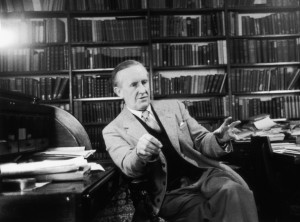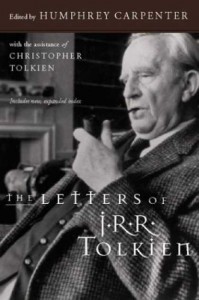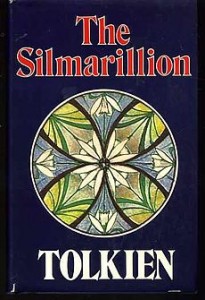 In our latest Library feature, Tedoras takes up the vexed issue of Tolkien and allegory.
In our latest Library feature, Tedoras takes up the vexed issue of Tolkien and allegory.
Majesty and simplicity: on Tolkien and allegory
by Tedoras
Tolkien’s disdain, and avowed desuetude, of allegory is widely known by most familiar with his writings. Snippets from essays, letters, and remarks all show the Professor rejecting the notion that allegory is employed in his mythology; instead, Tolkien directs readers to the difference between allegory and applicability.
The “allegory-applicability” debate has been a steady focus of scholars for years. However, by and large, the scholarly community has deferred to Tolkien’s own rejection of allegory on simple fidelity.
A close reading of The Letters of J.R.R. Tolkien reveals that such deference is perhaps fallacious. In the context of the letters I will discuss below, Tolkien himself explain how the text may be “applied.” With the Professor’s own “interpretation” (though it is hard to call the very author an “interpreter”) in hand, we may put aside all other conjectures, serious and ridiculous, which have plagued all interested minds.
 Yes, you have inferred correctly: I do not believe that we can make the distinction between allegory and applicability as Tolkien does. The truth is, Tolkien’s “application” further reveals his conscious intent, and most definite understanding, of the allegory in the mythology, particularly as manifested in The Lord of the Rings. As you will see, this debate can be confounded by how one defines “allegory” and “applicability,” and moreover by the notion of intent.
Yes, you have inferred correctly: I do not believe that we can make the distinction between allegory and applicability as Tolkien does. The truth is, Tolkien’s “application” further reveals his conscious intent, and most definite understanding, of the allegory in the mythology, particularly as manifested in The Lord of the Rings. As you will see, this debate can be confounded by how one defines “allegory” and “applicability,” and moreover by the notion of intent.
I will, thus, be examining what happens when the freedom of the reader and the mind of the author converge. That is, what happens when the reader is the author? At that point, we must tread carefully, and seek to take most seriously what is said; for at that junction the truth is revealed. The big question is: how do we define Tolkien’s “interpretation” of his own texts?
Tolkien’s allegory, like fellow Inkling C.S. Lewis’, is religious in nature. But unlike the realm of Narnia, Tolkien’s is devised subtly; so much so, in fact, that Tolkien did not notice it slipping into his world at first (though many, including this author, would argue that subtlety is characteristic of allegory, or a well-executed one, at any rate).
At a certain point, however, he did notice it, he admits; and thence developed the complexity described in his many letters. The greatest problems of this debate arise when discussing intent or motive. While Tolkien may not have set out to write a religious work and ended up with his mythology or The Lord of the Rings, specifically, he did write with an incipient, deeply-developing religious allegory in mind, which clearly evinced itself to him in writing The Silmarillion.
Thus, his original intent was not allegorical in nature—it did not precede the story. Yet a story from which allegory then emanates remains an allegory, if not of a different type.
Tolkien states most frankly that “any attempt to explain the purport of myth or fairytale must use allegorical language” (Tolkien, Letters, 145). This statement is easy enough to accept as true, and, for most people, it is enough to forgo the effort to understand Tolkien’s allegory.
 I ask everyone to bear in mind this line; for Tolkien throughout never does explain, or even frame his answers, as the purport of his myth; rather, he defaults to an explanation of allegory itself. This explanation he would most likely characterize as “applicability,” as he does in letter #203. But this is the essence of my argument: the “applicability” of the story to its own author is, and can only be, the true identity of the tale, the allegory.
I ask everyone to bear in mind this line; for Tolkien throughout never does explain, or even frame his answers, as the purport of his myth; rather, he defaults to an explanation of allegory itself. This explanation he would most likely characterize as “applicability,” as he does in letter #203. But this is the essence of my argument: the “applicability” of the story to its own author is, and can only be, the true identity of the tale, the allegory.
The allegory of his myth, and thus not the purport thereof, constitutes three main parts: “Fall, Mortality, and the Machine” (Tolkien 145). The first two parts are readily understandable, but the Machine aspect Tolkien defines as “all use of external plans or devices…instead of development of the inherent inner powers or talents” (Tolkien 145-46). The explicit employ of the allegory, developing from this three-part definition, is further explained by Tolkien.
The notion of the Fall is perhaps the most overtly religious, and it is a main driver of the mythology and story. Conflicts arise from falls, which the “Children of God” mainly experience, and which Tolkien says mostly concerns The Silmarillion, in which the repeated falls of the Elves drive the story (Tolkien 147). The first fall, however, is a “fall of Angels” to Tolkien’s mind, involving the “gods” during Creation (Tolkien 147). This first fall is that of Morgoth, and in his explanation thereof, Tolkien not only equates the Valar with angelic spirits, but also the fall itself with that of Satan (Tolkien 243). Valinor is “a kind of Paradise,” and it is there that the first fall of Elves, “war in Paradise, the slaying of Elves by Elves,” takes place (Tolkien 148).
Interestingly, to a mortal such as Frodo, Valinor represents “a purgatory and a reward,” for there he is granted temporary abidance for his virtuous deeds “in littleness and in greatness” before passing on, as it were (Tolkien 328). From this (and I will refer those seeking more detail to the text of letter #131), Tolkien admits that The Lord of the Rings, built on this foundation, “is a fundamentally religious and Catholic work; unconsciously so at first, but consciously in the revision” (Tolkien 172).
The subtlety of this allegory, including the conscious excising of overtly religious diction and practice in the text, is because the “religious element is absorbed into the story and the symbolism,” the underlying myth being the allegorical foundation, rooted so deeply and so well that the works thence derived have no apparent hint of it (Tolkien 172).


